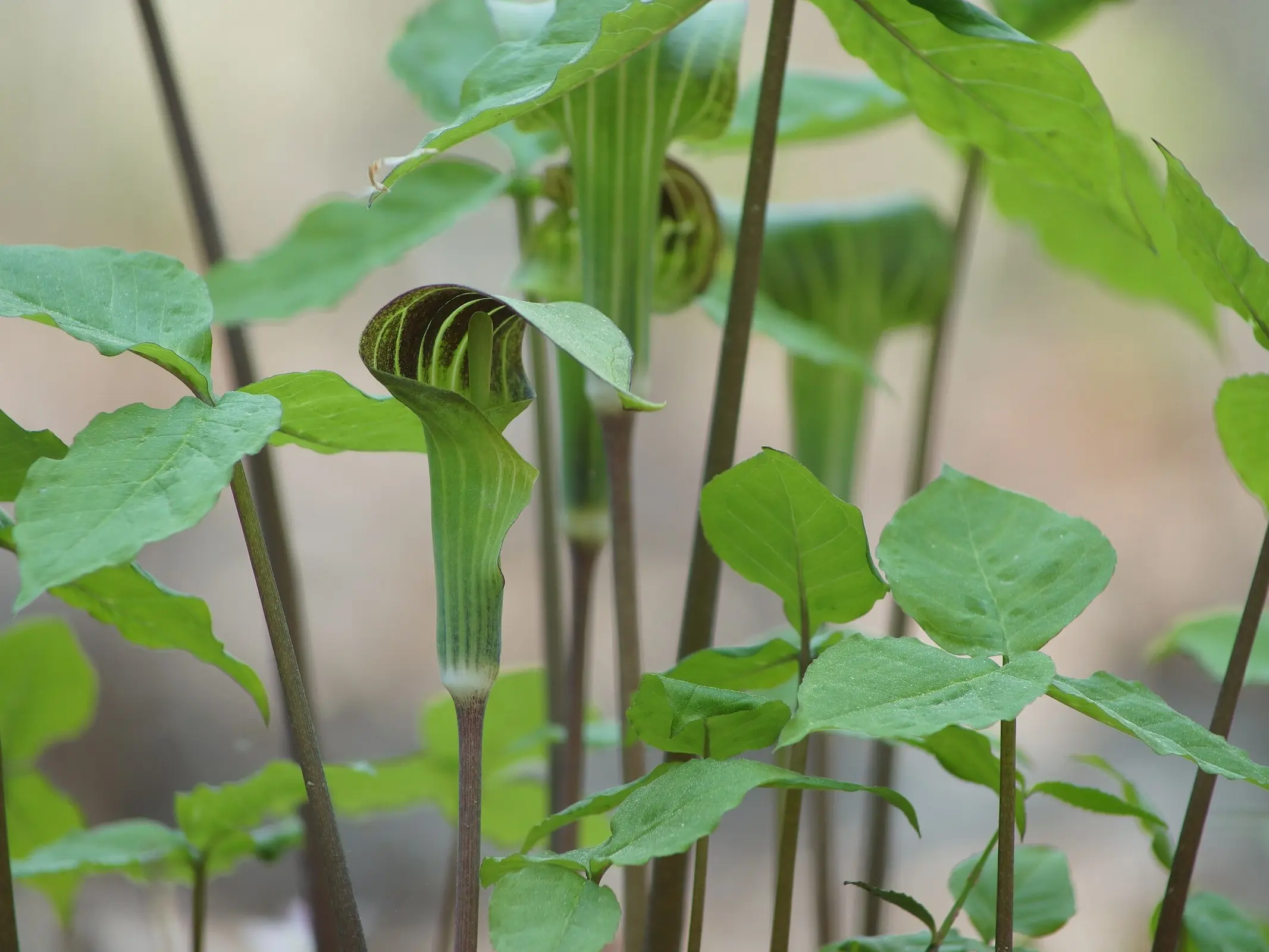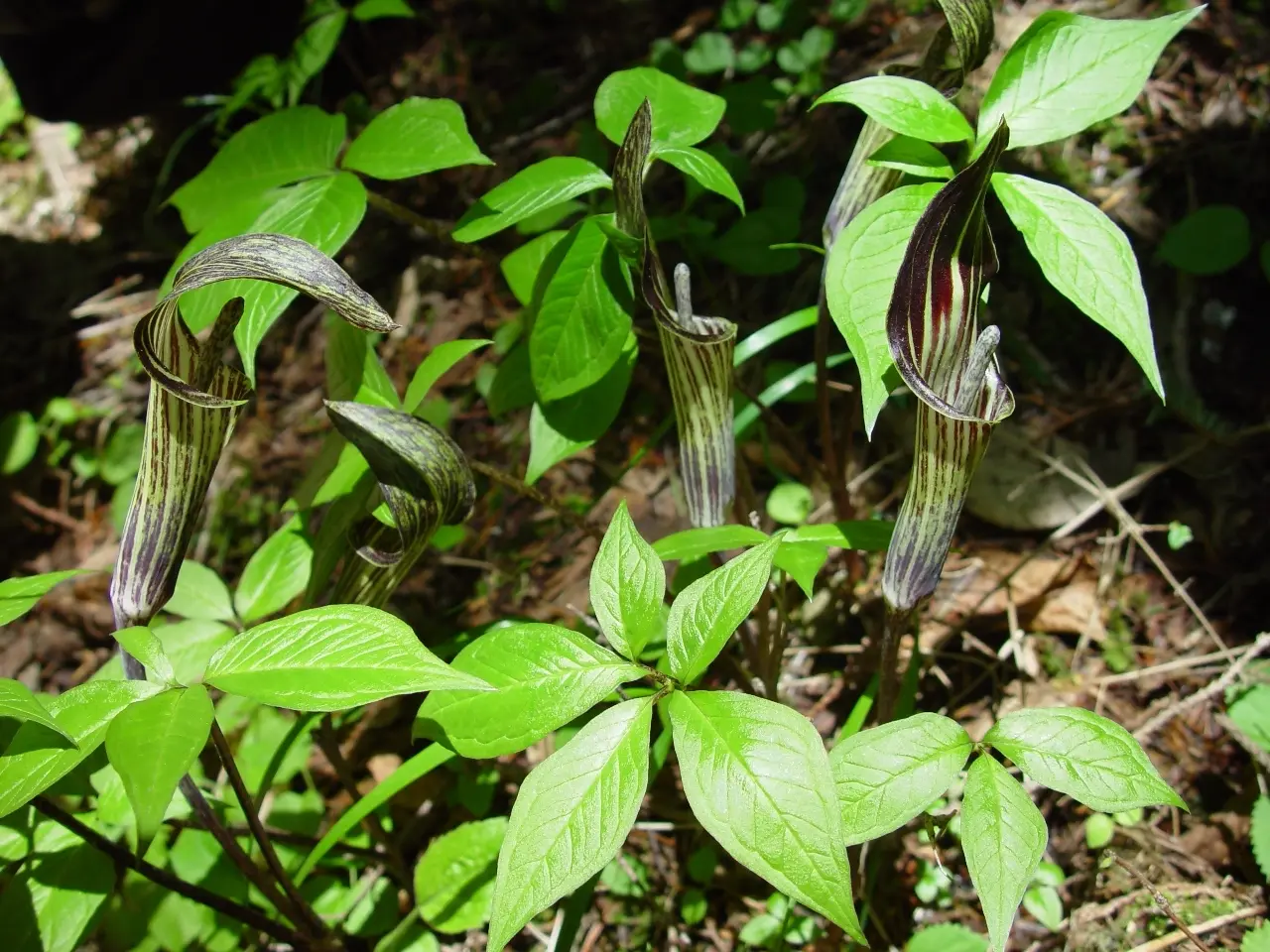
Welcome to another Monday and a new edition in the a-z of plants your horse can’t eat. Today’s plant has a fantastic name – the Jack-in-the-Pulpit looks like it belongs beyond the looking glass.
A Little About Jack-in-the-Pulpit
Arisaema is also called Bog Onion, Brown Dragon, Indian Turnip, Jack-in-the-Pulpit and Wild Turnip. This is a stemless plant that grows up to two feet tall. Leaves have three parts and long stalks. Flower is a spadix (jack) covered by green/brown/purple/white spathe (the pulpit). Fruit is a red berry that grows in clusters.
How Dangerous Is It?
This plant is unpalatable to equines and generally only a threat during extreme drought conditions. Luckily it’s not readily available to most horses, but worth noting due to its extreme toxicity.
All parts of this plant are toxic and can be fatal to equines.

What To Look For
You know your animal the best, so you should know when something is amiss. Jack-in-the-Pulpit toxicity symptoms include burning, swelling or irritation of the mouth and throat, diarrhea, gastrointestinal upset, runny eyes, colic and excessive thirst.
Learn More
Be sure to check out the Jack-in-the-Pulpit page to learn more about the plant and while you are at it why not check out more toxic plants?
*It should be noted that I’m not a veterinarian. This information is written specifically for horses and should be used for reference purposes only. If you think your horse has eaten something toxic call your vet right away.